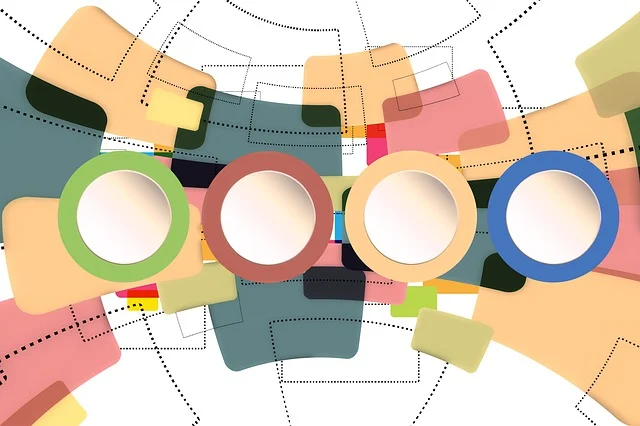An infographic is a visual illustration of information, information, or information.
It combines pictures, charts, photographs, and text to give complex records in a clear and concise manner, making it less difficult for the target audience to understand and maintain the facts.
Infographics are usually utilized in numerous fields, including training, marketing, journalism, and business, to communicate information, strategies, timelines, or comparisons. They are effective due to the fact they simplify data, beautify visible engagement, and produce a message fast. Examples of factors in an infographic include pie charts, bar graphs, icons, timelines, flowcharts, and maps.
How do I create an infographic?
Making an infographic includes a few stages, from arranging the substance to planning the visuals. Here is a bit by bit guide:

1. Characterize the Reason
Distinguish your crowd: Comprehend who will see the infographic and what data they need.
Put forth an objective: Figure out what message you need to impart, whether it’s making sense of an idea, sharing information, or looking at choices.
2. Research and Gather Information
Accumulate data: Gather precise, important information from solid sources to help your message.
Arrange the information: Separate the information into edible segments. Just utilize the most significant and important realities.
3. Make a Construction/Diagram
Frame the stream: Plan how the data will be organized. Infographics frequently follow designs like timetables, records, or examination outlines.
Distinguish central issues: Feature the main focal points and gather supporting information around them.

4. Pick a Plan Instrument
Visual computerization Instruments: Use devices like Canva, Adobe Artist, Piktochart, or Venngage to plan your infographic. Large numbers of these stages offer layouts to make the cycle more straightforward.
5. Plan Your Infographic
Pick a design: Select or make a design that matches the kind of data you’re sharing (e.g., pie graphs for insights, flowcharts for processes).
Utilize predictable varieties: Adhere to a variety that upgrades intelligibility and supplements your message.
Add visuals: Use symbols, delineations, diagrams, and graphs to outwardly address the information. Keep the plan basic and stay away from mess.
Add text: Incorporate succinct, clear text for titles, headings, and short depictions. Utilize simple-to-understand textual styles.
6. Use Progressive system and Dividing
Visual progressive system: Make significant data stand apart with bigger textual styles or more splendid varieties.
Separating: Pass on sufficient void area to try not to stuff and guarantee lucidness.
7. Survey and Alter
Edit: Check for spelling, language, and authentic mistakes.
Check configuration balance: Guarantee that visuals and text are adjusted, and the plan streams coherently.
8. Share and Appropriate
Distribute: Once finished, you can share your infographic on the web (virtual entertainment, web journals, sites) or print it on a case by case basis.

What is the purpose of infographics?
1. Simplifying Complex Information
Infographics break down complex information or strategies into visual representations, making it easier for human beings to apprehend concepts at a look.
2. Enhancing Engagement
Visuals are more engaging than undeniable textual content, which makes infographics a powerful way to seize and hold the target audience’s attention. They are visually attractive and assist highlight key factors.
3. Improving Retention
People tend to consider visible statistics greater without difficulty than text alone. Infographics use coloration, design, and imagery to improve retention of the message.
4. Communicating Data Visually
Infographics give numbers, records, or comparisons via graphs, charts, and diagrams, making complicated statistics greater reachable.
5. Facilitating Quick Understanding
Infographics allow human beings to quickly take in key facts without having to study lengthy paragraphs. This is particularly useful whilst the audience has limited time.
6. Supporting Decision Making
Infographics can help in evaluating alternatives, explaining execs and cons, or illustrating tendencies, which aids decision-making processes via supplying clear, concise visuals.
7. Marketing and Branding
In commercial enterprise, infographics are often used for advertising functions. They can efficiently communicate an emblem’s message, product benefits, or enterprise trends, helping with brand popularity and engagement.
8. Educating Audiences
Infographics are normally utilized in education, fitness, and other fields to educate or enhance recognition. They can summarize a topic or provide an explanation for a step-by-step process in an academic context.
Overall, infographics goal to make information
Infographics examples
Here are a few normal kinds of infographics with guides to provide you with a superior thought of how they can be utilized:
1. Factual Infographic
Reason: To envision information and insights.
Model: A diagram or visual chart showing the level of environmentally friendly power sources utilized universally, with symbols addressing sunlight based, wind, and hydro energy.
Use case: Introducing review results or industry patterns.
2. Timetable Infographic
Reason: To grandstand occasions or cycles in sequential requests.
Model: A timetable of verifiable occasions paving the way to the development of the cell phone, with key achievements checked outwardly on the line.
Use case: Featuring the development of an item or verifiable movement.
3. Process Infographic
Reason: To delineate strides in a cycle.
Model: A bit by bit guide on the most proficient method to reuse appropriately, showing symbols for arranging, washing, and arranging materials in canisters.
Use case: Making sense of how a framework functions or how to follow through with a job.
4. Examination Infographic
Reason: To think about at least two things, thoughts, or ideas.
Model: A next to each other examination of crossover versus electric vehicles, utilizing outlines or symbols to portray key contrasts like eco-friendliness, cost, and natural effect.
Use case: Assisting watchers with settling on choices.
5. Educational Infographic
Reason: To instruct or make sense of a subject.
Model: An infographic making sense of the advantages of a solid eating regimen, with classes for natural products, vegetables, proteins, and grains, close by healthful data.
Use case: Summing up a point or making sense of another idea.
6. Geographic Infographic
Reason: To imagine information connected with a geographic area.
Model: A world guide infographic showing the dissemination of web clients by country, with variety inclinations demonstrating thickness.
Use case: Featuring territorial or worldwide patterns.

7. Various leveled Infographic
Reason: To address data arranged by significance.
Model: A pyramid graph showing levels of human requirements (like Maslow’s pecking order), with the most fundamental necessities at the base and self-completion at the top.
Use case: Showing organized degrees of significance or need.
8. List Infographic
Reason: To list data in a visual configuration.
Model: A main 10 rundown of ways to remain useful at work, with symbols addressing each tip (e.g., planning, enjoying reprieves, limiting interruptions).
Use case: Introducing an assortment of tips, thoughts, or highlights.
conclusion
In conclusion, infographics are effective gear for conveying records quickly and effectively. By combining visuals with textual content, they simplify complex records, beautify engagement, and enhance records retention. Whether used for training, marketing, or offering statistics, infographics make content material greater on hand and less difficult to understand. Their versatility lets in for an extensive variety of applications, from providing information to explaining procedures or evaluating options, making them an essential medium in the modern rapid-paced, visually pushed world.

